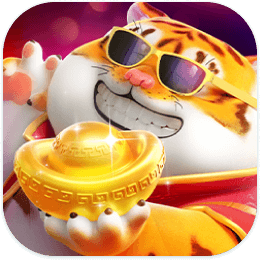Shotgun Gauges Understanding the Basics - NSSF Lets Go Shooting
Understanding shotgun gauges is essential to selecting the right shotgun for your needs, this article will provide you a clear overview.
If you’re new to the world of shotguns, one of the first things you’ll notice is the variety of shotgun gauges available. Understanding shotgun gauges is essential to selecting the right shotgun for your needs. In this article, we’ll provide an overview of shotgun gauges and what you need to know to make an informed decision.
What is a Shotgun Gauge?
A shotgun gauge refers to the diameter of the shotgun’s bore. The gauge is determined by the number of lead balls, of the same diameter as the bore, that it would take to weigh one pound. For example, if it takes 12 lead balls to weigh one pound, then the shotgun is a 12-gauge.
Shotgun gauges typically range from 10-gauge to .410-bore. The larger the gauge, the smaller the diameter of the bore. For example, a 10-gauge shotgun has a larger diameter bore than a 20-gauge shotgun.
The most common shotgun gauges are 12-gauge and 20-gauge, followed by 16-gauge, 28-gauge, and .410-bore. The 12-gauge is the most popular and versatile of all the shotgun gauges.
Choosing the Right Shotgun Gauge
Choosing the right shotgun gauge depends on several factors, including the intended use of the shotgun, personal preference, and physical ability. For example, a 20-gauge shotgun may be more suitable for small game hunting or recreational shooting, while a 12-gauge shotgun may be a better choice for larger game or self-defense purposes. It’s important to try out different gauges and get a feel for each before making a decision. Additionally, consulting with experienced shooters or a knowledgeable salesperson can provide valuable insights and recommendations.

The 10 Gauge Shotgun
The 10 gauge shotgun is a large and powerful firearm that was once popular among hunters for shooting large game at long distances. However, due to its size and weight, it has become less popular over time and has largely been replaced by the 12 gauge shotgun. Today, the 10 gauge shotgun is primarily used in niche applications such as turkey hunting and waterfowl hunting.
The 12 Gauge Shotgun
The typical hunter looks for one shotgun that he can shoot well and use on everything from small game to deer. There is no doubt that such an all-around shotgun has to be a 12 gauge. In the early 1900s, the 10 gauge with 1 1/4 ounces of shot was a hot item and considered a good choice for an all-around gauge, but modern shotshells have changed the scene. Today, the 12 gauge can do anything the 10 gauge did, and sometimes do it better.
Gunning for small game and upland birds, a hunter can get by very well with the standard 2 3/4-inch, 12-gauge shotshell loaded with 1 1/4 ounces of shot. The waterfowl hunter who takes his birds at greater range should use the 12-gauge, 2 3/4-inch magnum load with 1 1/2 ounces of shot or the three-inch magnum load with 1 3/8 to 1 7⁄8 ounces of shot. If it’s deer you’re after, use the 2 3/4-inch magnums loaded with 12 pellets of 00 buckshot, or the three-inch magnum with 15 pellets of 00 buckshot or 10 pellets of 000 buckshot. Shotgun slugs are another option. Learn more about shotgun slugs here.
The 12-gauge shotgun, however, is heavier and bulkier than guns in the smaller gauges. The ammunition is also bigger and heavier to carry. This may not mean much to the duck hunter sitting in a blind, but the upland gunner who carries his shotgun all day may find the smaller gauges more suitable.
The 16 Gauge Shotgun
The 16 gauge shotgun simply refuses to die, even though the 12 gauge has it beat as an all-around gauge and the 20 gauge comes off as a better choice for a light, quick-handling shotgun for small game and birds. Some hunters claim the 16 gauge is a good compromise between the 12 and 20 gauge, but this is a tough argument to prove.
The standard 16-gauge load carries 1 1/8 ounces of shot, exactly the same as the 2 3/4-inch, 20-gauge magnum load, and 1⁄8 ounce less than the standard 12-gauge load. The 2 3/4-inch, 16-gauge magnum shell has 1 1/4 ounces of shot, the same as the standard 12-gauge field load and the 20-gauge, three-inch magnum.
True, the 16-gauge gun is a bit lighter than the 12-gauge, but it’s not as light as a 20 gauge. What does all this mean? If you have a 16 gauge, keep it and you will be happy with it. But if you’re buying a new shotgun, you’re better off narrowing your selection down to the 12 or 20-gauge.
The 20 Gauge Shotgun
The 20-gauge shotgun makes the grade as a top choice for all-around upland gunning and waterfowl shooting over decoys. It’s lighter and slimmer than the 12 gauge, which makes it a faster-handling gun and a more comfortable one to carry in pheasant fields and through briar patches. The ammunition is also lighter to carry.
And it’s a fact that most upland game is shot at under 30 yards, so the 20 gauge has more than adequate killing range. The standard 20-gauge load carries one ounce of shot, which is enough for just about all upland hunting. If a hunter expects to take birds under tougher conditions, he can use the 20-gauge, 2 3/4-inch magnum load with 1 1/8 ounces of shot. For ducks over decoys, the 20-gauge, three-inch magnum is the ticket. In fact, the three-inch magnum load will also do the job at pass shooting.
Hunters who have both 12 and 20-gauge guns in their racks admit that most often they will pick the 20 gauge when heading for favorite rabbit patches and grouse covers.
The 28 Gauge shotgun and .410
The 28 gauge seems to have a growing number of fans and it’s with good reason. The 28-gauge shotgun is slim and light with not much recoil. On a skeet range, it is a pure joy to shoot. For the average upland gunner, the 28 gauge may not be big enough. The skilled shooter, however, should take a closer look. The 28 gauge is available in a load with 7⁄8 ounce of shot, which makes it adequate for woodcock, quail, doves, and similar birds. If you’re shooting over dogs, the 28 gauge is more than enough gun.
The .410 is another load that has limited use. It’s fine for the smaller species that can be taken at close range, but it’s not recommended for anything else. True, at one time or another, a hunter has been seen knocking down pheasants with a .410—but these men are generally skilled shotgunners. The average hunter would be far better off with a 12 or 20 gauge. The same reasoning can be used to discourage a parent from buying his child a .410. A wiser choice for a youngster would be a light 20 gauge.
Shotgun Gauge Terminology
Here are a few terms to know when it comes to shotgun gauges:
- Bore: The interior diameter of the shotgun barrel.
- Shot: The small pellets that are fired from a shotgun.
- Shot Size: The size of the individual pellets in a shotgun shell.
- Shot Capacity: The number of pellets that can be fired from a shotgun shell.
Understanding shotgun gauges is essential to selecting the right shotgun for your needs. When choosing a shotgun, consider the intended use and the advantages and disadvantages of each gauge. The most common shotgun gauges are 12-gauge and 20-gauge, but there are other options available depending on your needs. With this knowledge, you can make an informed decision and enjoy your shotgun for years to come.
This article features text from author Vin T. Sparano, as excerpted from Complete Outdoors Encyclopedia: Camping, Fishing, Hunting, Boating, Wilderness Survival, First Aid.
Learn more about the shotgun sports here.
A shotgun gauge refers to the diameter of the shotgun’s bore. The gauge is determined by the number of lead balls, of the same diameter as the bore, that it would take to weigh one pound. For example, if it takes 12 lead balls to weigh one pound, then the shotgun is a 12-gauge.
Shotgun gauges typically range from 10-gauge to .410-bore. The larger the gauge, the smaller the diameter of the bore. For example, a 10-gauge shotgun has a larger diameter bore than a 20-gauge shotgun.
The most common shotgun gauges are 12-gauge and 20-gauge, followed by 16-gauge, 28-gauge, and .410-bore. The 12-gauge is the most popular and versatile of all the shotgun gauges.
Choosing the Right Shotgun Gauge
Choosing the right shotgun gauge depends on several factors, including the intended use of the shotgun, personal preference, and physical ability. For example, a 20-gauge shotgun may be more suitable for small game hunting or recreational shooting, while a 12-gauge shotgun may be a better choice for larger game or self-defense purposes. It’s important to try out different gauges and get a feel for each before making a decision. Additionally, consulting with experienced shooters or a knowledgeable salesperson can provide valuable insights and recommendations.

The 10 Gauge Shotgun
The 10 gauge shotgun is a large and powerful firearm that was once popular among hunters for shooting large game at long distances. However, due to its size and weight, it has become less popular over time and has largely been replaced by the 12 gauge shotgun. Today, the 10 gauge shotgun is primarily used in niche applications such as turkey hunting and waterfowl hunting.
The 12 Gauge Shotgun
The typical hunter looks for one shotgun that he can shoot well and use on everything from small game to deer. There is no doubt that such an all-around shotgun has to be a 12 gauge. In the early 1900s, the 10 gauge with 1 1/4 ounces of shot was a hot item and considered a good choice for an all-around gauge, but modern shotshells have changed the scene. Today, the 12 gauge can do anything the 10 gauge did, and sometimes do it better.
Gunning for small game and upland birds, a hunter can get by very well with the standard 2 3/4-inch, 12-gauge shotshell loaded with 1 1/4 ounces of shot. The waterfowl hunter who takes his birds at greater range should use the 12-gauge, 2 3/4-inch magnum load with 1 1/2 ounces of shot or the three-inch magnum load with 1 3/8 to 1 7⁄8 ounces of shot. If it’s deer you’re after, use the 2 3/4-inch magnums loaded with 12 pellets of 00 buckshot, or the three-inch magnum with 15 pellets of 00 buckshot or 10 pellets of 000 buckshot. Shotgun slugs are another option. Learn more about shotgun slugs here.
The 12-gauge shotgun, however, is heavier and bulkier than guns in the smaller gauges. The ammunition is also bigger and heavier to carry. This may not mean much to the duck hunter sitting in a blind, but the upland gunner who carries his shotgun all day may find the smaller gauges more suitable.
The 16 Gauge Shotgun
The 16 gauge shotgun simply refuses to die, even though the 12 gauge has it beat as an all-around gauge and the 20 gauge comes off as a better choice for a light, quick-handling shotgun for small game and birds. Some hunters claim the 16 gauge is a good compromise between the 12 and 20 gauge, but this is a tough argument to prove.
The standard 16-gauge load carries 1 1/8 ounces of shot, exactly the same as the 2 3/4-inch, 20-gauge magnum load, and 1⁄8 ounce less than the standard 12-gauge load. The 2 3/4-inch, 16-gauge magnum shell has 1 1/4 ounces of shot, the same as the standard 12-gauge field load and the 20-gauge, three-inch magnum.
True, the 16-gauge gun is a bit lighter than the 12-gauge, but it’s not as light as a 20 gauge. What does all this mean? If you have a 16 gauge, keep it and you will be happy with it. But if you’re buying a new shotgun, you’re better off narrowing your selection down to the 12 or 20-gauge.
The 20 Gauge Shotgun
The 20-gauge shotgun makes the grade as a top choice for all-around upland gunning and waterfowl shooting over decoys. It’s lighter and slimmer than the 12 gauge, which makes it a faster-handling gun and a more comfortable one to carry in pheasant fields and through briar patches. The ammunition is also lighter to carry.
And it’s a fact that most upland game is shot at under 30 yards, so the 20 gauge has more than adequate killing range. The standard 20-gauge load carries one ounce of shot, which is enough for just about all upland hunting. If a hunter expects to take birds under tougher conditions, he can use the 20-gauge, 2 3/4-inch magnum load with 1 1/8 ounces of shot. For ducks over decoys, the 20-gauge, three-inch magnum is the ticket. In fact, the three-inch magnum load will also do the job at pass shooting.
Hunters who have both 12 and 20-gauge guns in their racks admit that most often they will pick the 20 gauge when heading for favorite rabbit patches and grouse covers.
The 28 Gauge shotgun and .410
The 28 gauge seems to have a growing number of fans and it’s with good reason. The 28-gauge shotgun is slim and light with not much recoil. On a skeet range, it is a pure joy to shoot. For the average upland gunner, the 28 gauge may not be big enough. The skilled shooter, however, should take a closer look. The 28 gauge is available in a load with 7⁄8 ounce of shot, which makes it adequate for woodcock, quail, doves, and similar birds. If you’re shooting over dogs, the 28 gauge is more than enough gun.
The .410 is another load that has limited use. It’s fine for the smaller species that can be taken at close range, but it’s not recommended for anything else. True, at one time or another, a hunter has been seen knocking down pheasants with a .410—but these men are generally skilled shotgunners. The average hunter would be far better off with a 12 or 20 gauge. The same reasoning can be used to discourage a parent from buying his child a .410. A wiser choice for a youngster would be a light 20 gauge.
Shotgun Gauge Terminology
Here are a few terms to know when it comes to shotgun gauges:
- Bore: The interior diameter of the shotgun barrel.
- Shot: The small pellets that are fired from a shotgun.
- Shot Size: The size of the individual pellets in a shotgun shell.
- Shot Capacity: The number of pellets that can be fired from a shotgun shell.
Understanding shotgun gauges is essential to selecting the right shotgun for your needs. When choosing a shotgun, consider the intended use and the advantages and disadvantages of each gauge. The most common shotgun gauges are 12-gauge and 20-gauge, but there are other options available depending on your needs. With this knowledge, you can make an informed decision and enjoy your shotgun for years to come.
This article features text from author Vin T. Sparano, as excerpted from Complete Outdoors Encyclopedia: Camping, Fishing, Hunting, Boating, Wilderness Survival, First Aid.
Learn more about the shotgun sports here.
Share This Article
This website uses cookies to improve your experience while you navigate through the website. Out of these cookies, the cookies that are categorized as necessary are stored on your browser as they are essential for the working of basic functionalities of the website. We also use third-party cookies that help us analyze and understand how you use this website. These cookies will be stored in your browser only with your consent. You also have the option to opt-out of these cookies. But opting out of some of these cookies may have an effect on your browsing experience.
Literally Mindblowing Gameplay. 15 to 20-minute intense playtime. Enter the arena, go three rounds against The Dealer, and walk away with the prize.
This site only collects related articles. Viewing the original, please copy and open the following link:Shotgun Gauges Understanding the Basics - NSSF Lets Go Shooting






















































































































































































